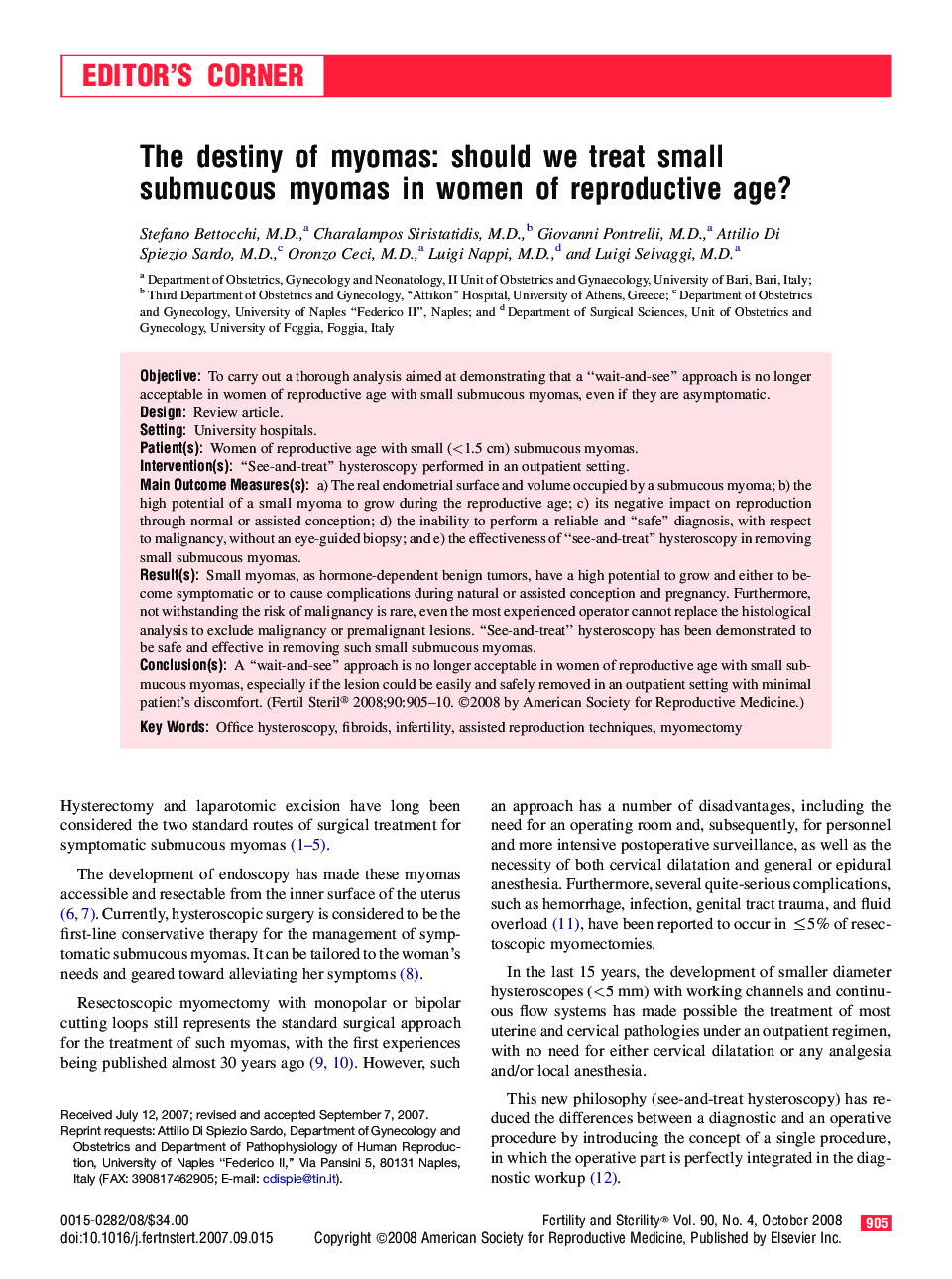| Article ID | Journal | Published Year | Pages | File Type |
|---|---|---|---|---|
| 3937327 | Fertility and Sterility | 2008 | 6 Pages |
ObjectiveTo carry out a thorough analysis aimed at demonstrating that a “wait-and-see” approach is no longer acceptable in women of reproductive age with small submucous myomas, even if they are asymptomatic.DesignReview article.SettingUniversity hospitals.Patient(s)Women of reproductive age with small (<1.5 cm) submucous myomas.Intervention(s)“See-and-treat” hysteroscopy performed in an outpatient setting.Main Outcome Measures(s)a) The real endometrial surface and volume occupied by a submucous myoma; b) the high potential of a small myoma to grow during the reproductive age; c) its negative impact on reproduction through normal or assisted conception; d) the inability to perform a reliable and “safe” diagnosis, with respect to malignancy, without an eye-guided biopsy; and e) the effectiveness of “see-and-treat” hysteroscopy in removing small submucous myomas.Result(s)Small myomas, as hormone-dependent benign tumors, have a high potential to grow and either to become symptomatic or to cause complications during natural or assisted conception and pregnancy. Furthermore, not withstanding the risk of malignancy is rare, even the most experienced operator cannot replace the histological analysis to exclude malignancy or premalignant lesions. “See-and-treat” hysteroscopy has been demonstrated to be safe and effective in removing such small submucous myomas.Conclusion(s)A “wait-and-see” approach is no longer acceptable in women of reproductive age with small submucous myomas, especially if the lesion could be easily and safely removed in an outpatient setting with minimal patient's discomfort.
